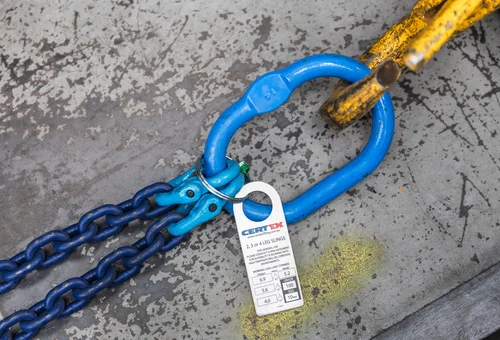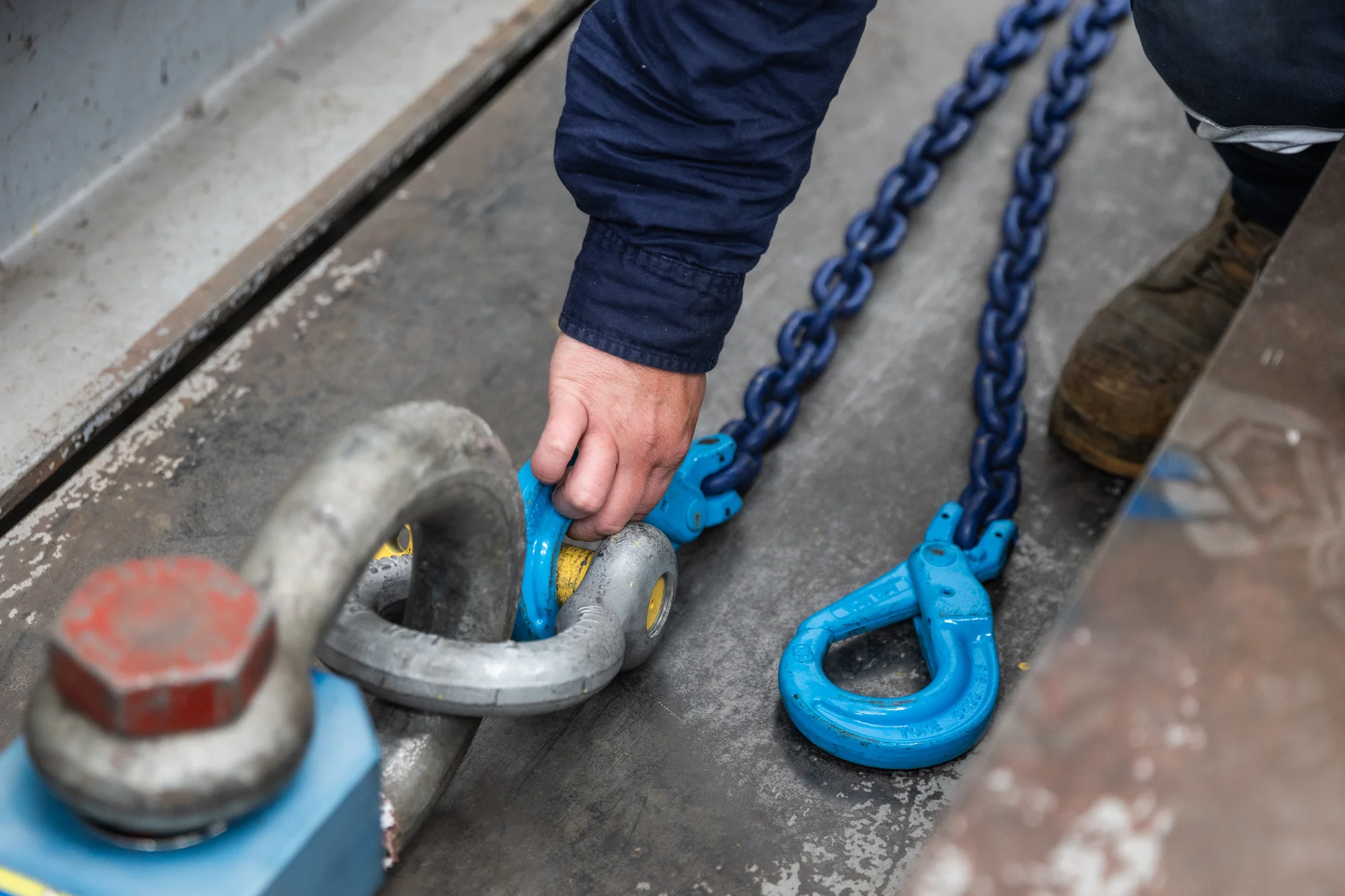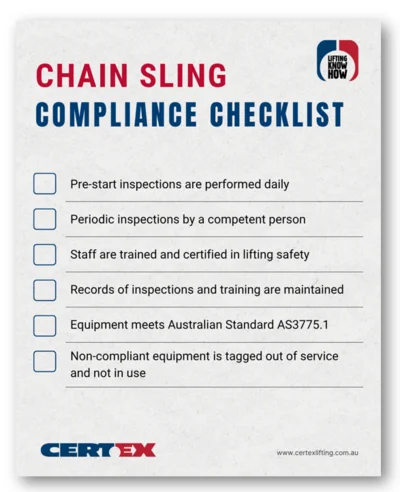This guide provides practical guidance to assist businesses and professionals involved in lifting and rigging operations in Australia. It outlines key requirements and best practices in accordance with Australian Standard AS 3775.1, the Work Health and Safety Regulations and related national policies.
Chain sling operations demand close attention to safety standards to prevent accidents, protect personnel, and extend equipment life. Following established regulations and industry guidance helps create safer, more efficient work environments.
Understanding the Regulatory Framework
In Australia, the use of chain slings is subject to stringent regulations outlined by several governing bodies, primarily:
- Work Health and Safety Regulations: The Work Health and Safety Act of 2011 outlines the general duties and responsibilities of ensuring workplace safety.
- Australian Standards (AS): Australian Standard AS 3775.1 outlines the requirements for the design, manufacture, mechanical properties, proof testing, marking and safe use of Grade 80 (T) and Grade 100 (V) chain slings. It also specifies the responsibilities and qualifications of a competent person involved in inspection and certification.
- Safe Work Australia: This governmental agency develops national policies relating to WHS and workers' compensation. The agency provides a range of resources and guidelines for safe lifting practices.
Corporate Responsibilities in Compliance
It is integral for companies undertaking lifting and rigging practices to uphold safety standards and compliance. They should:
- Invest in Quality Equipment: Procuring high-quality equipment that meets or exceeds AS standards, including chain slings, ensures reliability and safety.
- Ongoing Training: Regular training sessions update workers on best practices, safety protocols, and regulation changes.
- Regular Audits and Assessments: Internal audits and assessments ensure that the company meets regulatory requirements and can identify areas for improvement.

Recommended Best Practices for Chain Sling Safety
To support compliance with Australian regulations and enhance operational safety, companies involved in lifting and rigging operations are strongly encouraged to adopt the following best practices:
Inspection Requirements: It is recommended that a pre-start inspection is carried out before each use of a chain sling to identify any immediate signs of wear, damage or deformation. In addition, regular periodic inspections should be performed by a competent person who has the appropriate training, knowledge and experience to assess the condition and safety of the chain sling in accordance with AS 3775.1. Companies should engage third-party experts to conduct periodic inspections and provide documentation that meets Australian compliance requirements.
Certex Lifting offers certified Chain Sling Inspection Services and expert support. Contact us to learn more.
Worker Training and Certification: Companies should invest in ongoing training for all personnel involved in the use and handling of chain slings. Well-trained workers are more likely to follow safe lifting practices, perform accurate inspections, and understand the legal requirements under WHS and Australian Standards.
Record-Keeping and Documentation: Keeping comprehensive records of inspections, training certifications and maintenance activities is highly recommended. This not only supports regulatory compliance during audits but also promotes accountability and operational safety.
With Certex Lifting, clients receive detailed inspection documentation via our secure online portal accessible anytime to help manage your lifting and rigging equipment with ease.
How Certex Lifting Ensures Compliance
Meeting compliance standards for chain slings is a critical component of safe lifting and rigging operations in Australia. Organisations are encouraged to prioritise safety by investing in quality equipment, providing ongoing training and maintaining accurate inspection and maintenance records.
At Certex Lifting, we aim to support businesses in achieving and maintaining compliance by offering practical guidance, access to compliant high quality lifting equipment and qualified inspection services. Our team works closely with clients to help implement industry best practices aligned with AS 3775.1 and WHS regulations. To further assist in maintaining compliance, please refer to our downloadable Compliance Checklist, covering essential aspects of chain sling safety.
Ensure Compliance in Lifting with Our Expertise
With our inspection services and asset management tools, we assist in creating safer worksites and reducing the risk of lifting-related incidents. Our role is to support your compliance efforts, not replace your responsibilities by providing trusted expertise and reliable solutions.

Preventing Common Lifting Chain Failures
Understanding how to prevent common causes of chain failures is critical to ensure safe operations.
Understanding Lifting Chain Grades
How to select the correct lifting chain based on your specific requirements.





